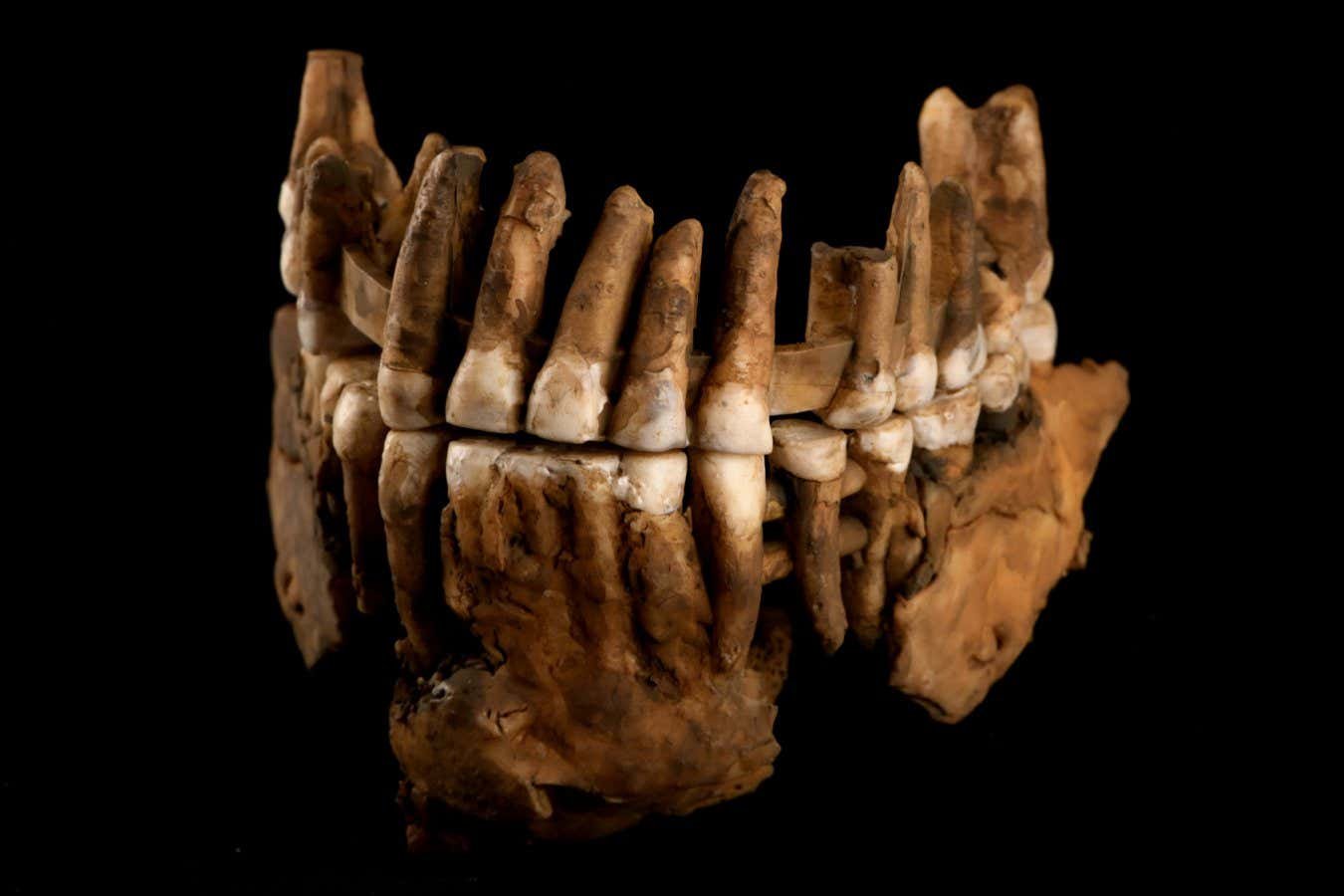
The jawbone of a Neanderthal known as Thorin, who is thought to have been part of an isolated population
Xavier Muth
Genetic analysis of a Neanderthal fossil found in France reveals that it was from a previously unknown lineage, a remnant of an ancient population that had remained in extreme isolation for more than 50,000 years. This finding sheds new light on the final phase of the species’ existence.
The fossil, dubbed Thorin after a character in J.R.R. Tolkien’s The Hobbit, was discovered in 2015 at the Grotte Mandrin in the Rhône Valley in southern France when Ludovic Slimak of the Centre for Anthropobiology and Genomics of Toulouse uncovered some teeth in the cave’s soil. The skeleton was painstakingly excavated over the next nine years to reveal 31 teeth, the jawbone, part of the skull and thousands of other bone fragments.
This was an incredible discovery in itself, as remains of Neanderthals – who lived in Eurasia from around 400,000 years ago until they went extinct around 40,000 years ago – are exceedingly rate.
Even more surprising was that Thorin’s genome could be obtained from a fragment of one of his teeth, as DNA isn’t typically preserved in warm climates. This revealed that the fossil was from a male, but opened up a mystery that took years to solve.
By comparing his genome with those of other Neanderthals, Slimak and his colleagues estimated Thorin lived around 105,000 years ago. However, archaeological evidence and analysis of the isotopes in his bones unequivocally showed that Thorin lived no more than 50,000 years ago – making him a “late Neanderthal” from the final phase of the species’ existence.
“For a very long time we [geneticists] were convinced that Thorin really was an early Neanderthal, just because his genetic lineage was so distantly related to contemporary Neanderthals in the same region,” says team member Tharsika Vimala of the University of Copenhagen. “On the other side, the archaeologists were convinced that he was a late Neanderthal. It took years of work from both sides to get to the answer.”
Eventually, the researchers realised that they must have discovered a hitherto unknown lineage of Neanderthals. Thorin was part of a small group who lived between 42,000 and 50,000 years ago. The group seems to have been a remnant of a far more ancient Neanderthal population that diverged from the main Neanderthal population around 105,000 years ago, and had then stayed genetically isolated for more than 50,000 years.

The bones of Thorin during excavation at Grotte Mandrin in France
Ludovic Slimak
Thorin’s DNA showed no evidence of interbreeding between his lineage and that of the main Neanderthal population, despite living in close proximity. “Thorin was completely divergent from any other Neanderthals,” says Slimak.
This isolation could have made the group particularly vulnerable. “Long term isolation or inbreeding can be detrimental to a population’s survival as it can reduce the genetic diversity over time, which in turn can have negative effects on our adaptability to changing environments,” says Vimala.
Slimak, Vimala and their colleagues then re-analysed the genome of another Neanderthal that had lived around 43,000 years ago at Les Cottés, France. They found traces of a “ghost population” in its DNA from a breeding event some 15,000 to 20,000 years previously, with another unknown Neanderthal group.
“This means that there must have been not only two populations among late Neanderthals, but very likely three,” says Slimak. Previously it had been thought that at the time before their extinction, the Neanderthals were all part of one genetically similar population.
“The evidence from Grotte Mandrin is fascinating as it gives some intriguing insights into these late Neanderthal populations and their dynamics,” says Emma Pomeroy at the University of Cambridge.
Topics:

